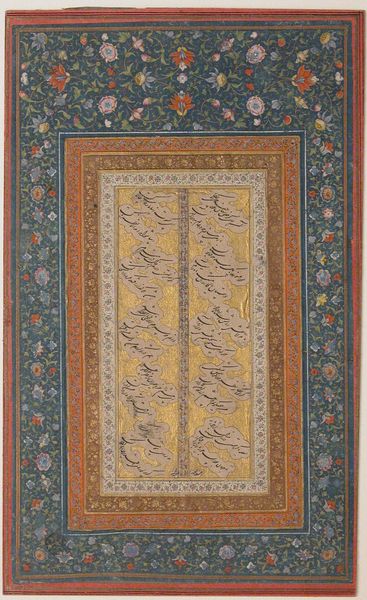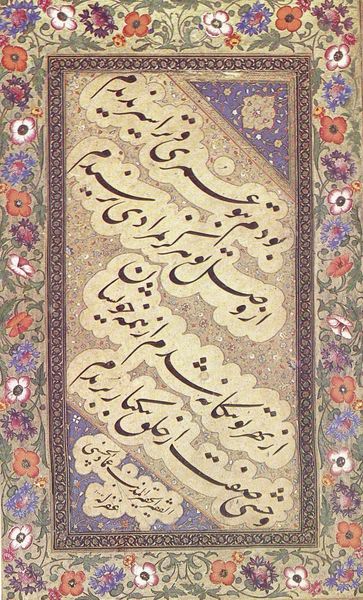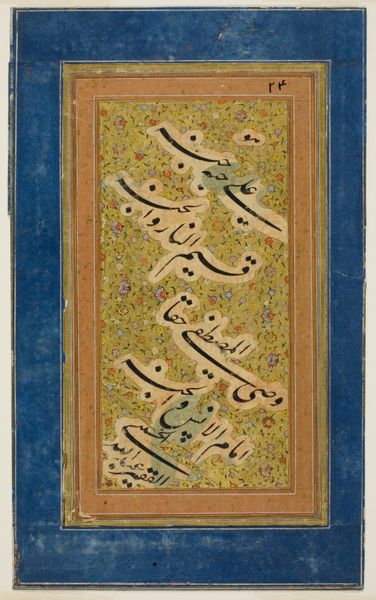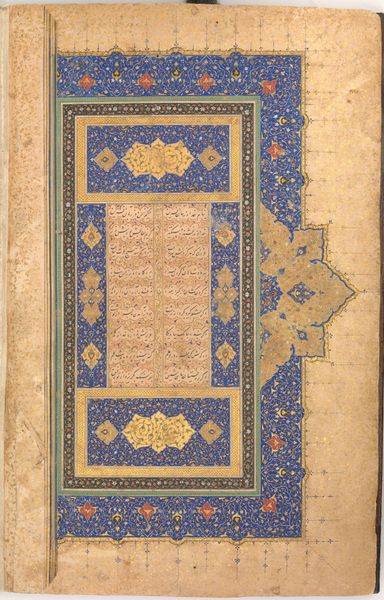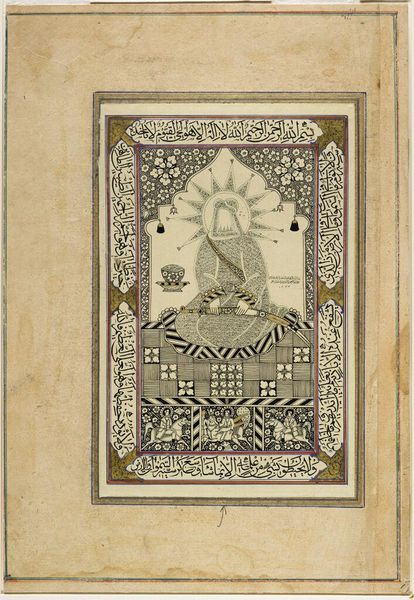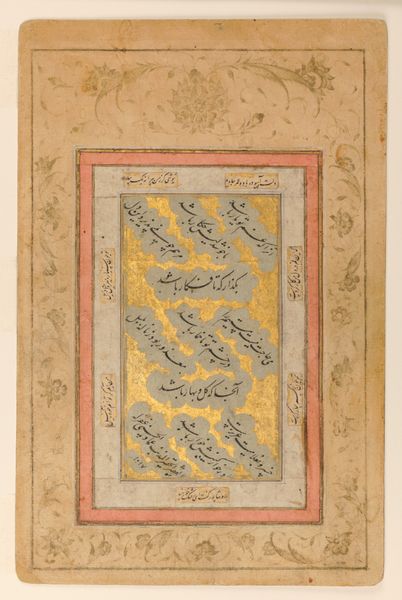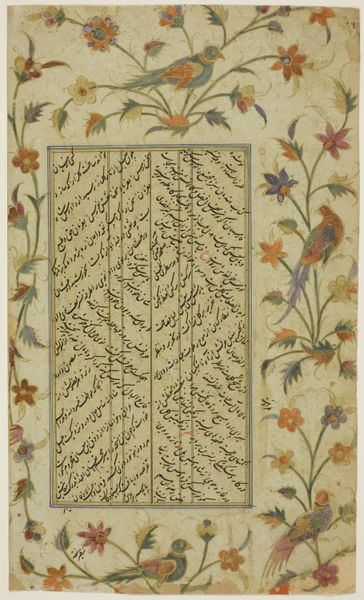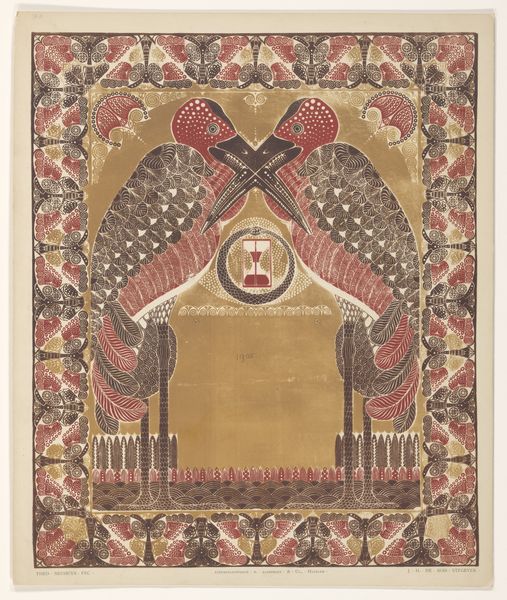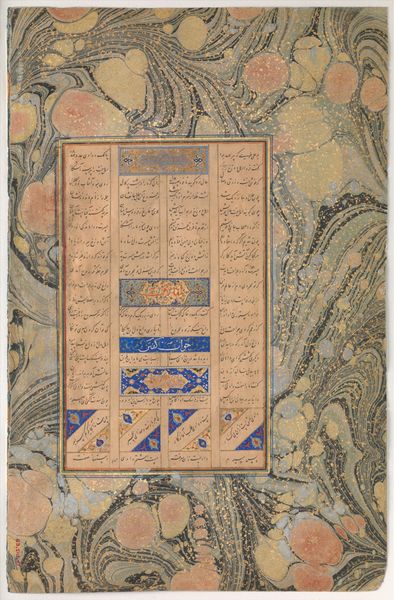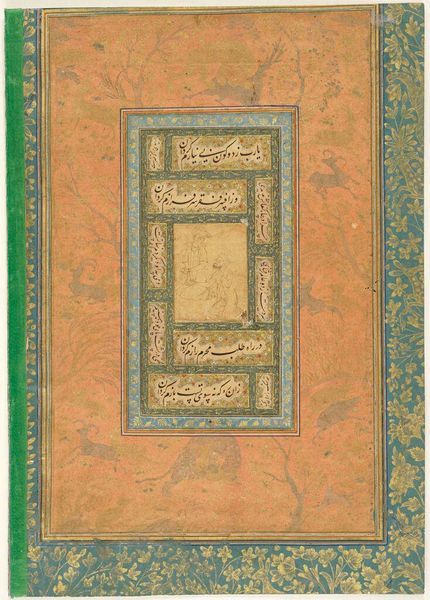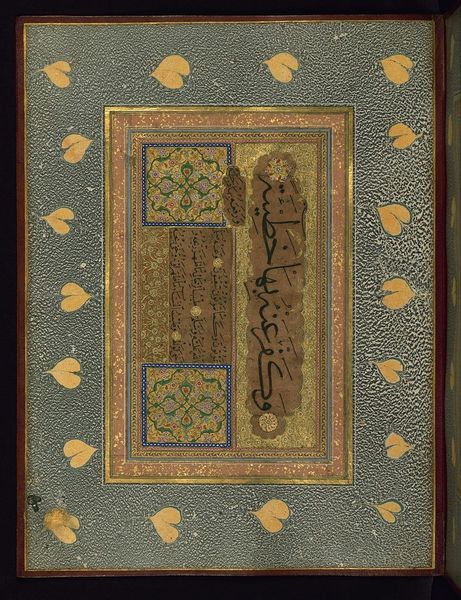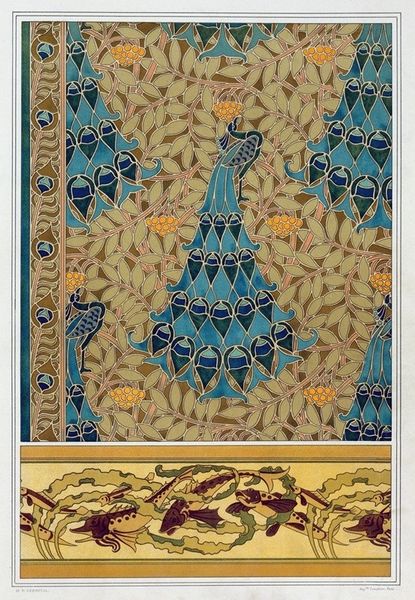
painting, paper, ink
#
painting
#
paper
#
geometric pattern
#
ink
#
geometric
#
islamic-art
#
miniature
#
calligraphy
Dimensions: 16 x 11 1/4 in. (40.64 x 28.58 cm)
Copyright: Public Domain
This album folio of poetry was created anonymously with ink, opaque watercolor, and gold on paper. Within the cultural context of Persian and Indian art, calligraphy was elevated to the status of high art, embodying not just aesthetic beauty but also spiritual depth and philosophical insight. The visual codes embedded in this work—the flowing script, the symmetrical layout, and the floral motifs—speak to the values of harmony, balance, and refinement cherished within the aristocratic circles that commissioned such pieces. It served as a symbol of status, intellect, and cultivated taste. The political movements and economic structures of its time also played a role. During the Mughal era, artistic patronage flourished, with emperors and nobles investing heavily in the creation of lavish manuscripts and album folios. This not only enriched the artistic landscape but also served to legitimize and consolidate their power. Art historians study such things as the lives of patrons, and the literary and artistic conventions, to appreciate these works of art. This helps us understand the social conditions that shape artistic production.
Comments
minneapolisinstituteofart about 2 years ago
⋮
Album pages combining fine calligraphy with borders richly illuminated with floral and animal motifs were a favorite Mughal art form as early as Jahangir (1569-1627). During this time, the precious albums assembled from various sources (muraqqa), became popular at court and somewhat supplanted the illustrated book. The taste and expertise of its compiler, rather than the talent of a single artist, determined the range of theme, artistic quality, and coherency of an assembled album. This page shows four lines of graceful nasta'liq script set against a minutely rendered, scrolled floral background of gold and blue, approximating the Persian manner. The white borders, however, punctuated with carefully painted poppies, reflect Mughal court taste of the seventeenth and eighteenth centuries.
Join the conversation
Join millions of artists and users on Artera today and experience the ultimate creative platform.
